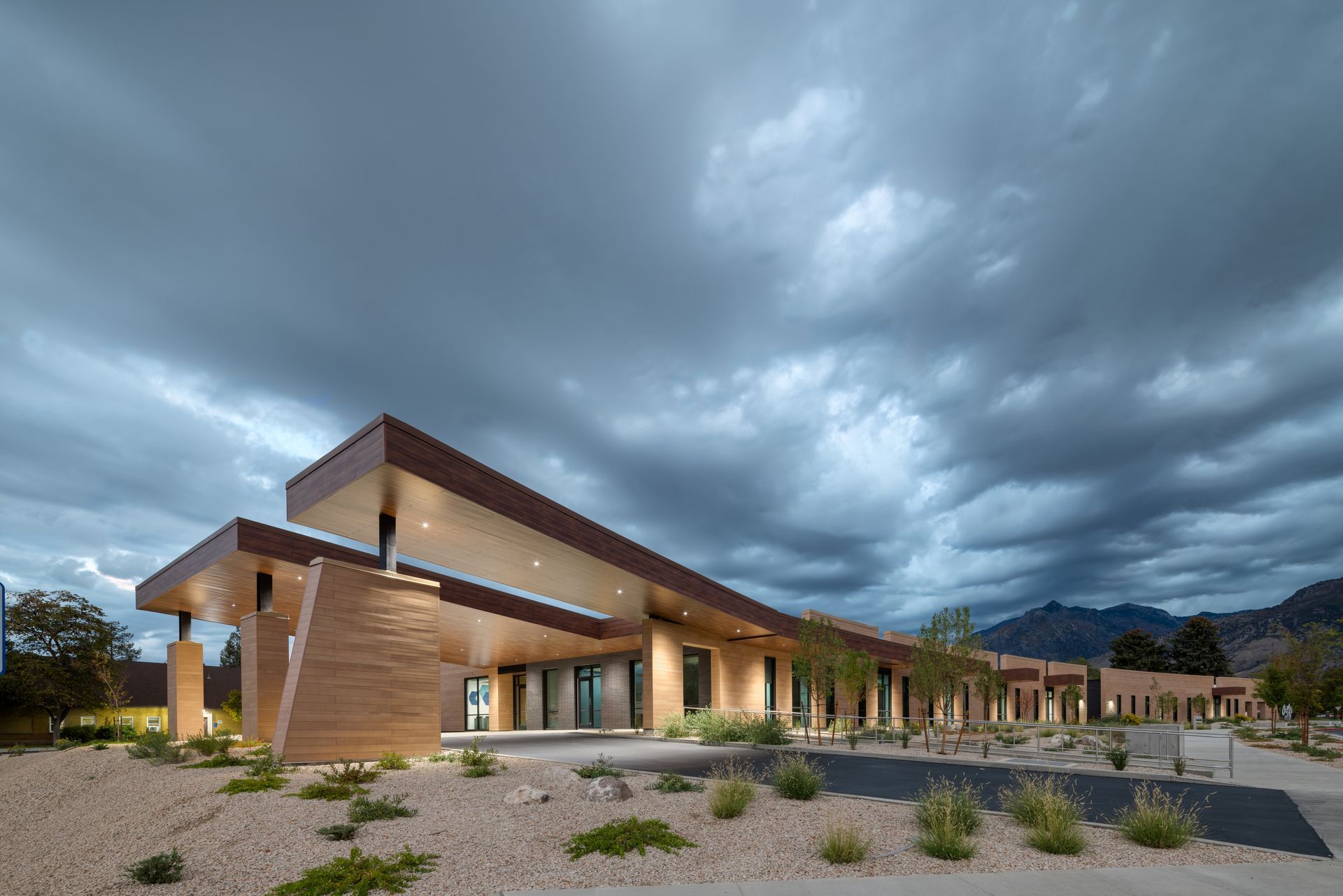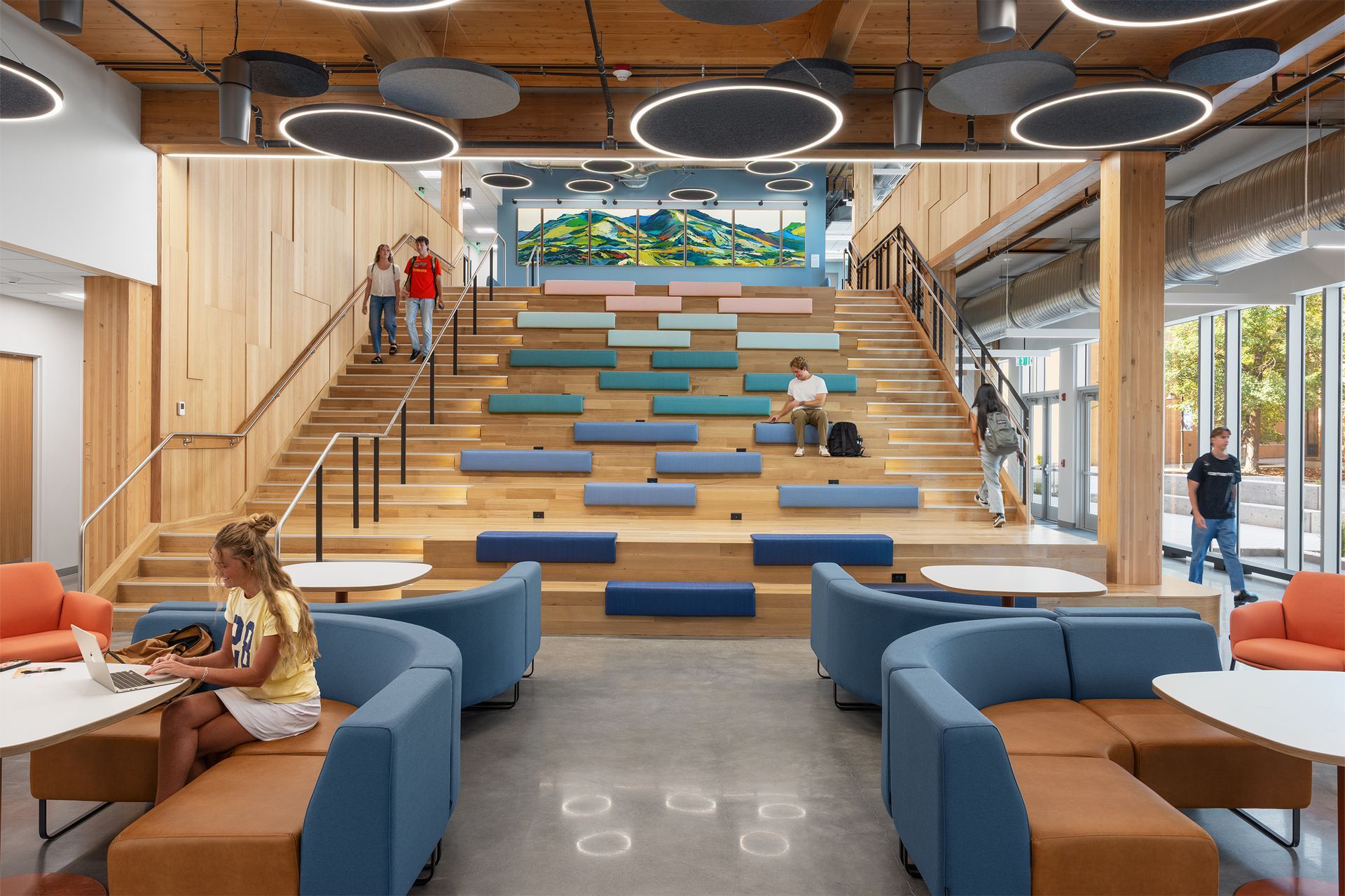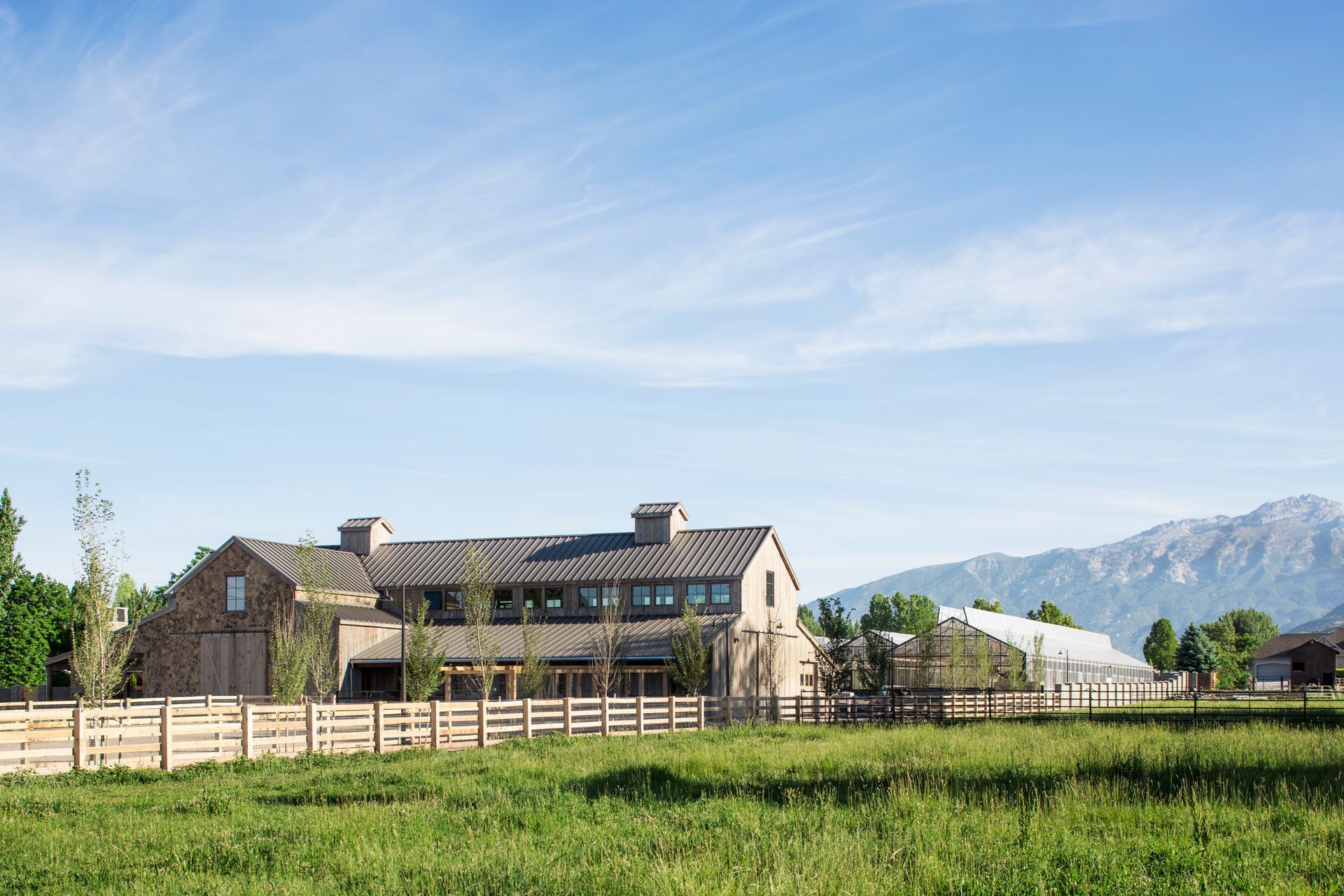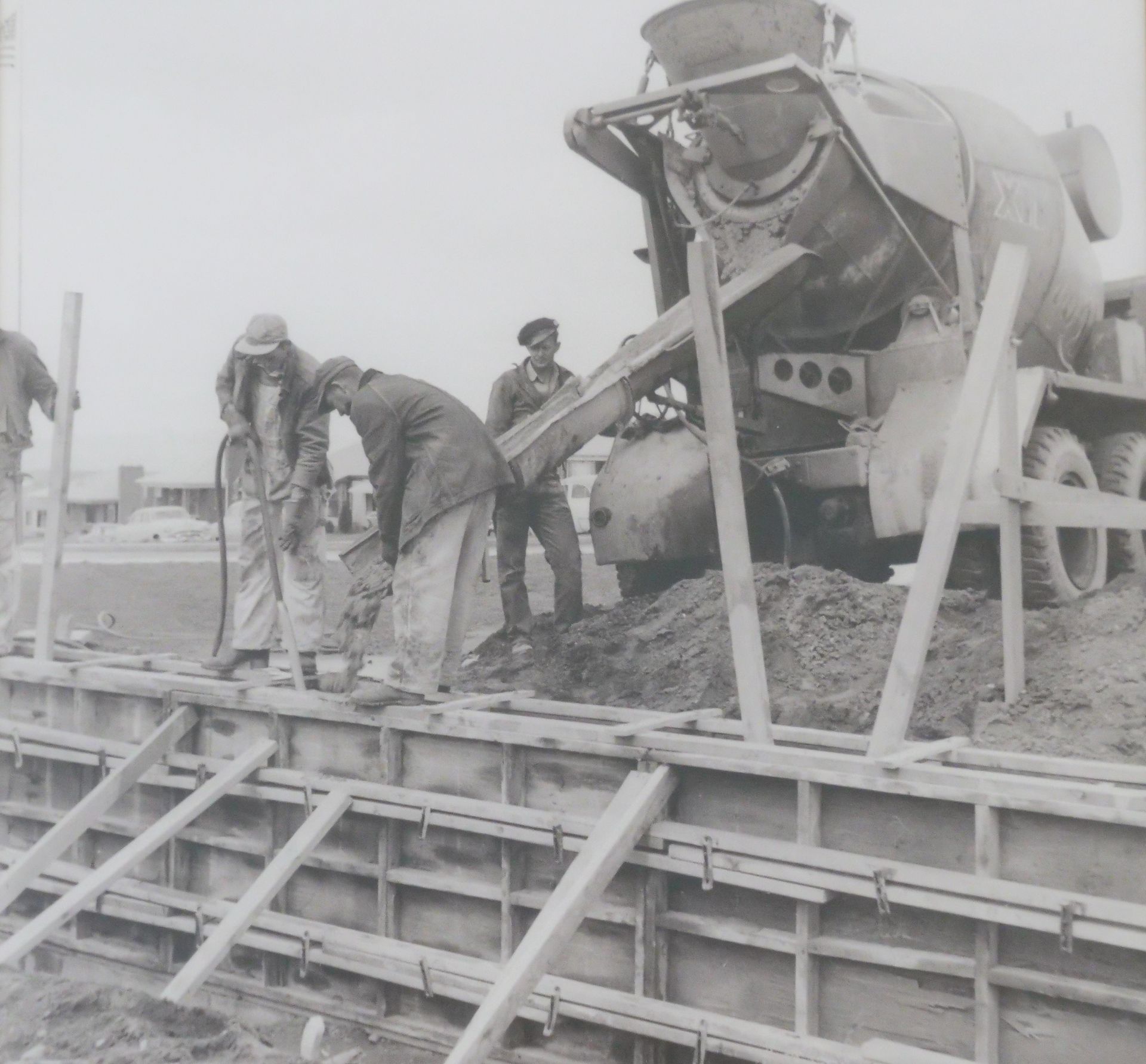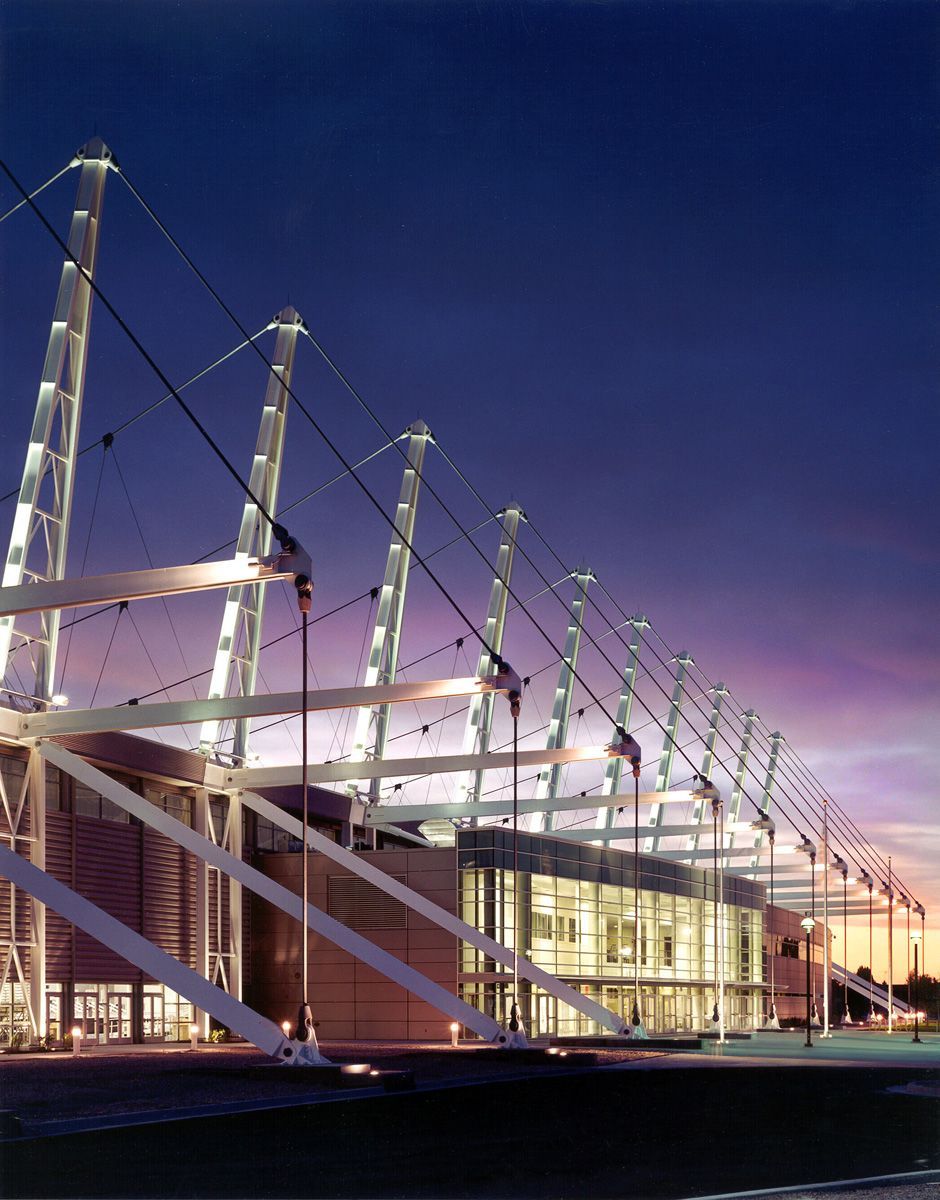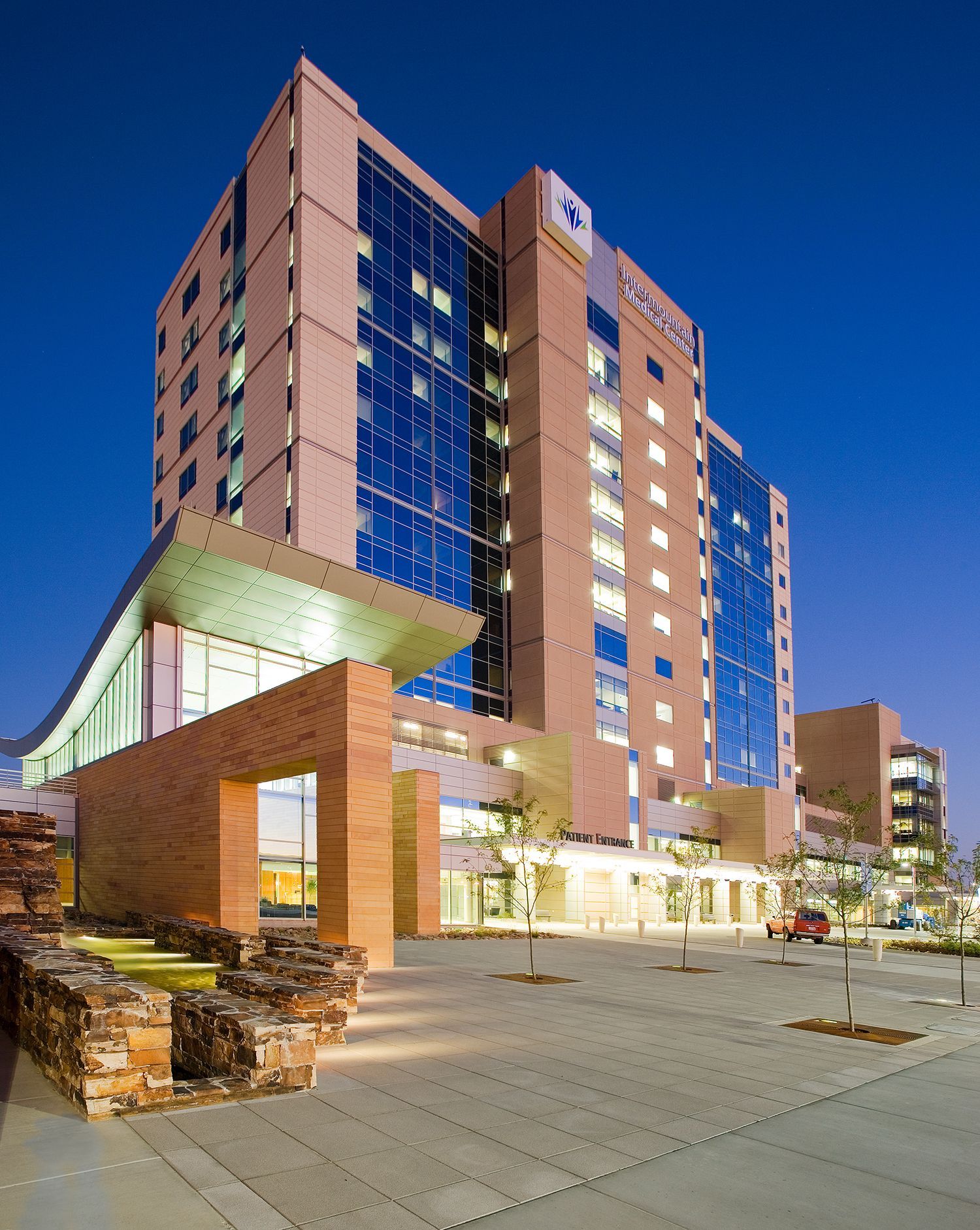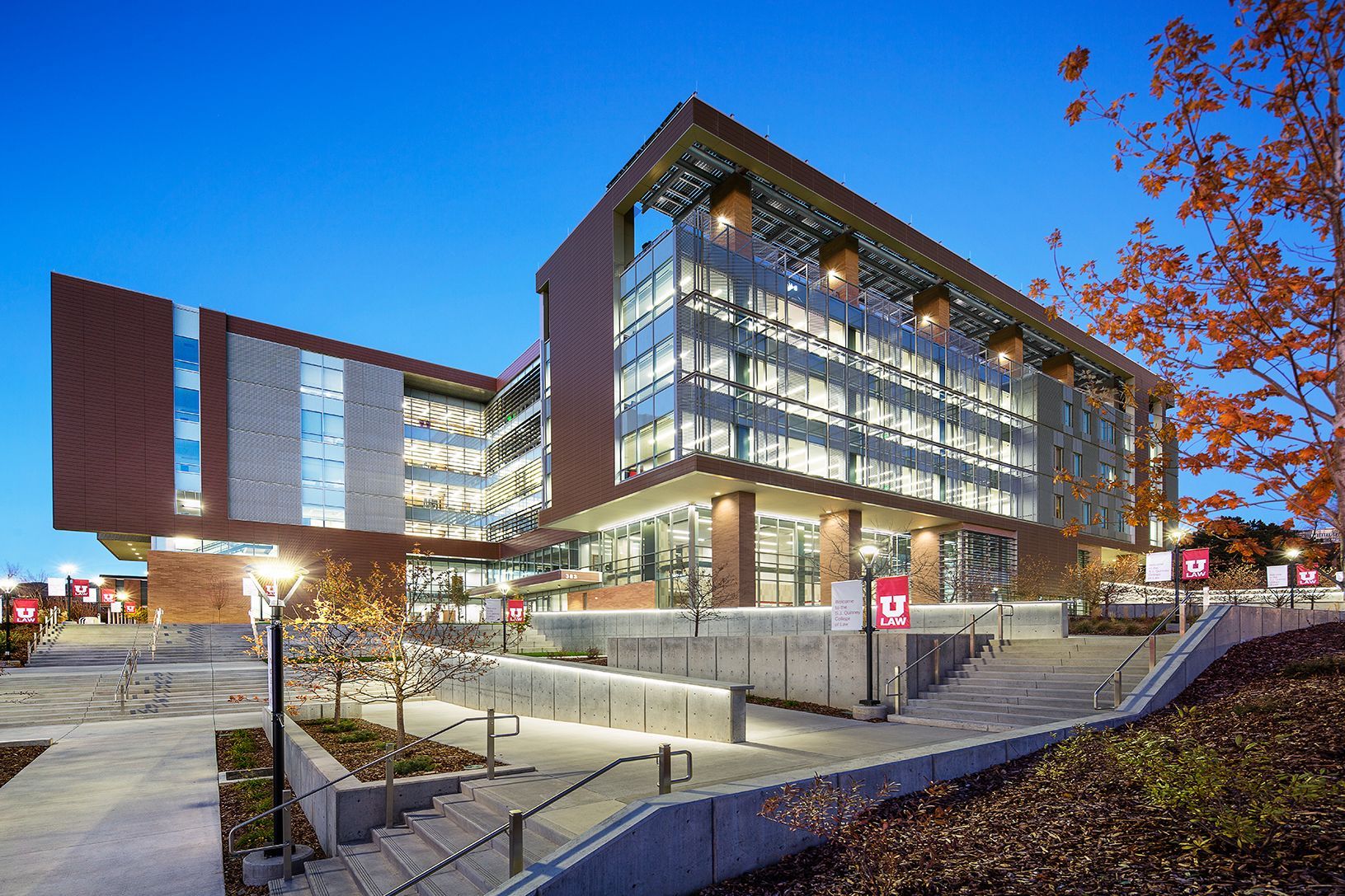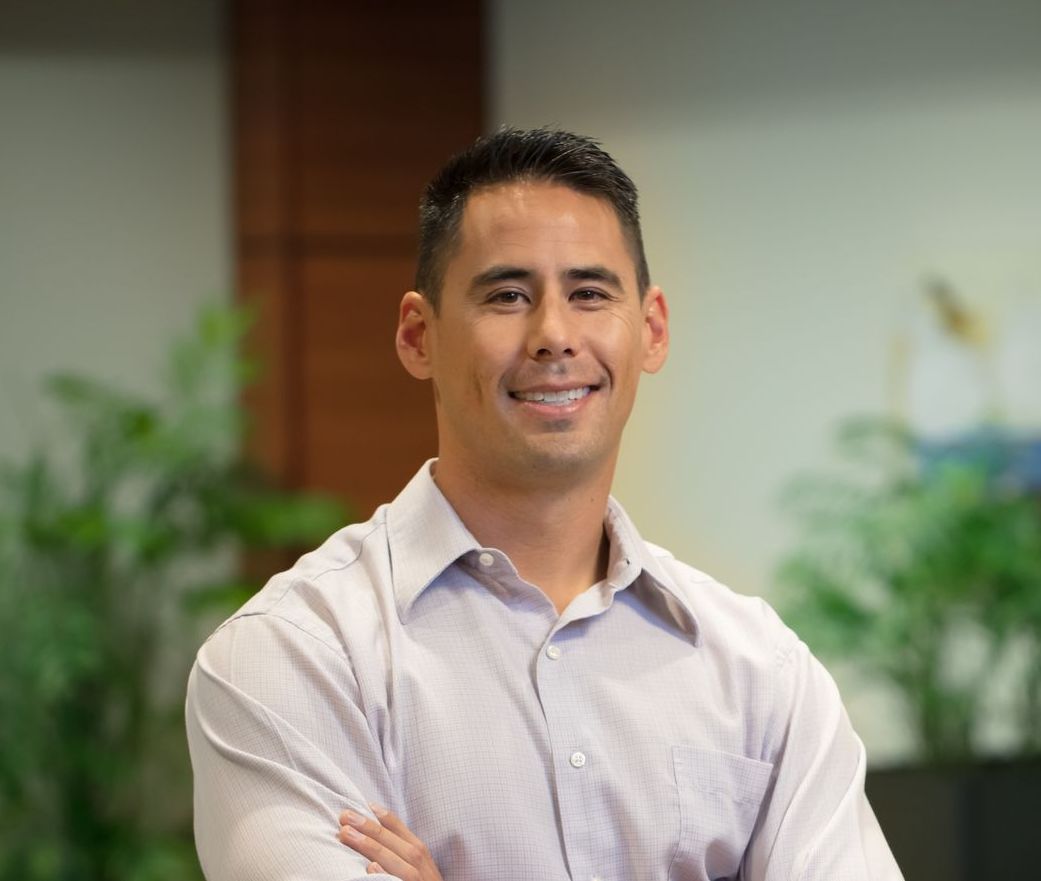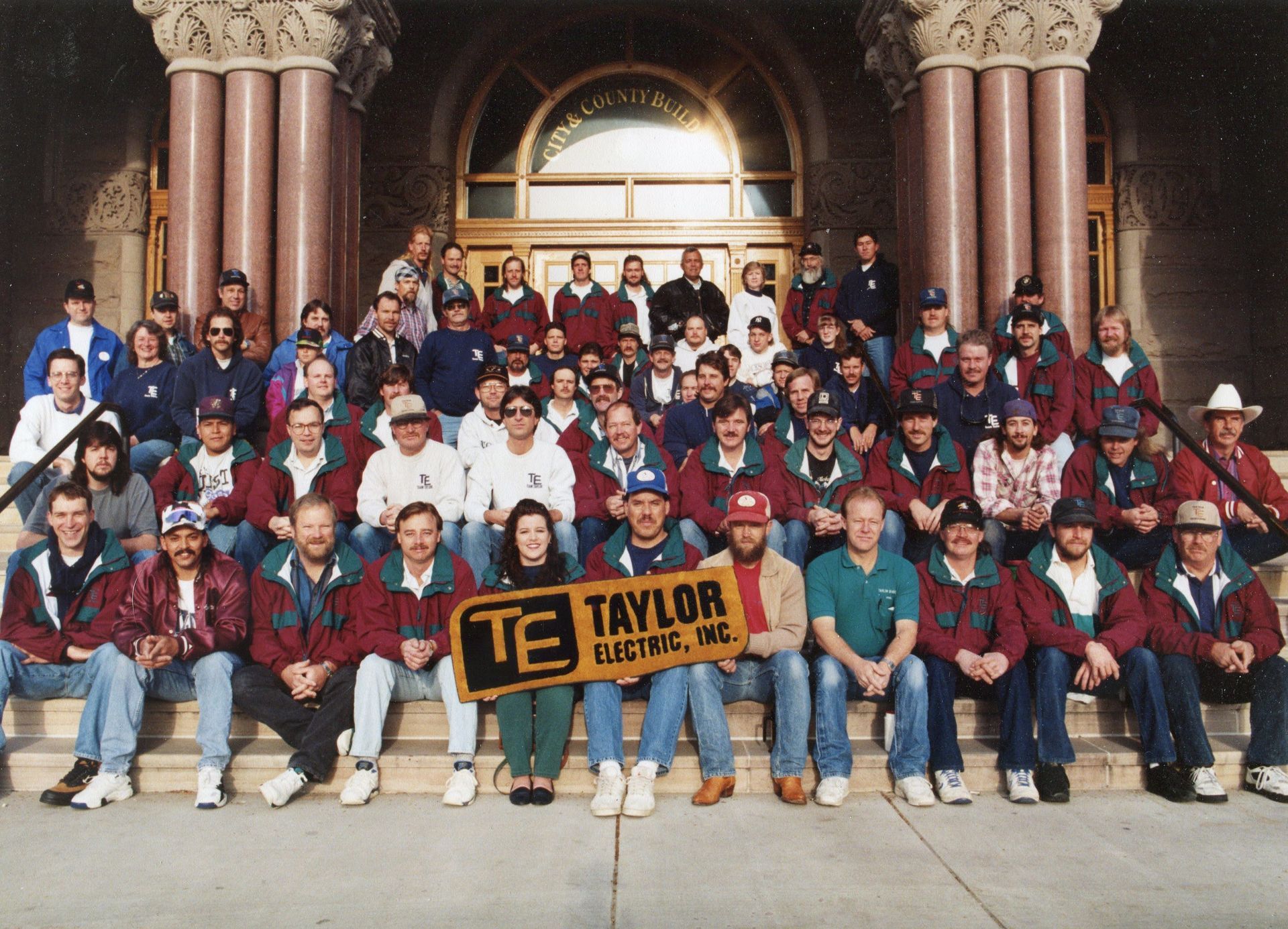Salt Lake-based MEPT firm is confident in its current trajectory; aiming to remain among the biggest and most diverse engineering firms in the Intermountain region. By Brad Fullmer
As one of the premier multi-disciplinary engineering consulting firms in the Intermountain region, Salt Lake-based Spectrum Engineers has forged a sterling reputation as a company that consistently delivers world-class design on high-profile, supremely challenging projects.
Founded in October 1982 by Stewart “Skip" Greene as primarily an electrical engineering firm, Spectrum has developed over the years into a full-blown MEPT (mechanical, electrical, plumbing, technology) firm that specializes in a wide array of professional design services, including specialty services such as acoustical, audio-visual, lighting, fire protection, and building commissioning via sister firm Total Building Commissioning.
As Spectrum Engineers celebrates its 40th anniversary in October, company executives are extremely grateful for the many clients and team members they have been able to work with over the years. These relationships and collective team efforts have helped Spectrum become what it is today. This excellence is manifest by ranking as the top MEP engineering firm in Utah Construction & Design’s Engineering rankings the past four years (2018-21), with annual revenues of $18.9 million, $17.5 million, $23.3 million and $23.7 million.
Following in Father’s Footsteps
Skip Greene admits to being heavily influenced by his father, Orrin “Chet” Greene, a professional engineer who forged a prominent career primarily as an electrical contractor. Chet founded Salt Lake-based Skyline Electric in 1959 when Greene was eight years old.
Once Greene graduated from Olympus High and got to the University of Utah, he partnered with his father to provide electrical engineering services for a couple of Chet’s clients, before ultimately buying him out in October 1982.
Greene said Chet’s success with Skyline—it was the third largest electrical contractor at one point in the 1980s—gave him all the confidence he needed in starting his own firm.
“I owe him a lot,” said Green of his father, who passed away at 87 in March 2013. “For life, mentoring me, and his reputation in the community, which opened many future doors.”
“The name ‘Spectrum’ developed from our experience that it was difficult to develop reliable
processes that successfully integrated information sharing between the engineering disciplines
of separate firms,” Green explained. “This problem could cause the reworking of the design,
which could be avoided.” He added that these inefficiencies led to a decrease in quality while
increasing costs. In addition, engineering firms would outsource specialty design elements,
which led to various problems with compatibility and synchronization.
Hence, Spectrum Engineers, Inc. was named as such because Greene envisioned a firm that could offer a full spectrum of disciplines and services.
Greene made it a point to expand Spectrum’s areas of specialization, which began with the
acquisition of an acoustical firm in the late 1980s followed by nine other firms over the
next 30 years, including ones that specialized in mechanical engineering, lighting design, and
structured cabling.
Setting a High Bar
“It all stems from setting a high bar of who we hire to begin with,” said Dave Wesemann, President/CEO. “One of our strengths is having these specialists. We’re not a firm with engineers being a jack of all trades. We were the first to establish specialties as a design discipline and have people who were experts in each of these fields. We like to stay ahead of the curve and set the bar for everybody else.”
One example of how Spectrum has set the bar is its formation of “Centers of Excellence”— groups of engineers and other team members who focus on one market sector or project type. Wesemann notes that in the early days of Spectrum, the same engineer would work on all types of projects and would have to re-invent the wheel for every new project. “By having teams who learn, gain experience, and become experts in a given project type allows us to achieve excellence in the quality and ultimate value that we offer to our clients.” says Wesemann. Healthcare and Higher Education are just a few examples of Spectrum’s Centers of Excellence.
Wesemann referenced building information modeling (BIM) as an another example of the firm’s willingness to embrace new technologies in day-to-day operations.
“When BIM came out in the early 2000s, we saw the industry afraid to jump into Revit,” said Wesemann. “We took a different approach and said ‘Let’s spend time and money on Revit and get really good at it.' As a result, we were way ahead of the game regarding Revit, to the point where AutoDesk (manufacturer) would invite Spectrum’s BIM people to offer suggestions with its software development.”
In addition to specialization, Greene figured out the key to keeping the best talent required them being rewarded based on their production. This was implemented by offering new employees the same opportunities as veteran employees, with compensation tied directly to production.
By the early 1990s, Greene felt the firm’s processes were giving it a competitive edge in the industry which resulted in attracting prime talent and increasing market share. Greene admitted that seeing employees succeed individually—which resulted in a stronger, more collaborative firm—was his greatest joy.
“The most satisfying aspect of my career was watching people achieve success they never dreamed was possible,” he said. “I really believe people are more capable of being able to do things than they understand for themselves—they underestimate themselves. It doesn’t mean they have to be an entrepreneur—part of the system we developed is giving people the ability to be good at what they’re good at.”
Inflection Point
Given the firm’s success over the years, it may be easy to relax, but that isn’t the attitude at Spectrum. Staying "humble and hungry" and becoming the best firm they can be for the next 40 years is at the heart of their goals, while maintaining a focus on their core values: Accountability, Client Care, and Teamwork (ACT).
“Our vision at Spectrum is to be the trusted team of choice,” said RoLynne Hendricks, Principal and Chief Strategy Officer who joined the firm in 2020 to lead its strategy, marketing and business development efforts, having been recruited by President/CEO Dave Wesemann, partly based on her experience in the architectural industry.
Ambitious growth “is part of our vision—I am passionate about helping Spectrum grow strategically. We’re taking this group of amazing people, building on the foundation of the first 40 years, and setting the stage for our next growth phase. And it’s exciting!”
Wesemann, who was named President in 2016 and President/CEO in 2021 when Greene, formally retired, said the firm was proud to be ranked in ENR’s Top 100 MEP firms list for over 5 years, which quickly spurred internal discussions of what Spectrum can become before he retires.
“We want to replicate our high-performance business model in other locations,” said Wesemann. “We have an Arizona office (Tempe), and we’re looking at other markets as well. Significant growth will take geographic expansion. At the same time, we will never lose sight of our current markets. We give them the service of a large firm but with a small firm feel, with principal involvement on projects.”
“The emphasis on an entrepreneurial culture that is built here is unique—it’s heavily performance-based,” said Chris Kobayashi, Principal and nine-year Spectrum veteran who was named Chief Operating Officer (COO) on July 1, and who represents the next wave of young leaders at the firm. Kobayashi believes the entrepreneurial culture is a key factor in the firm setting ambitious goals for the future, as it spurs employees to work as hard as they can to achieve top-shelf results. “You get what you put in—there is not a ceiling,” he said.
“In the last couple of years, we have been setting goals and taking steps to really elevate our employees,” added Ryan Boogaard, Principal Mechanical Engineer and representative of the mechanical group. “We have been investing in tools and people that will help us better serve our clients and be a more successful company.”
Next Generation of Leaders
Wesemann, who started at Spectrum in 1990, said he joined the firm in part because of its business model. He liked the idea of “being rewarded based on performance and hard work—it really rang true for me.”
Wesemann said he learned many great lessons from Greene, including “do it right—no excuses,” he said. “Doing it right is usually not the easiest, fastest or cheapest way to do things, but in the end, doing it right is best and helps you sleep at night. I grasped onto that. If you do make a mistake, make it right. We all make mistakes. There were others who helped mentor me along, but most of what I learned came from Skip.”
Wesemann was named President in 2016 and then assumed the role of CEO gradually over a three-year period beginning in 2018.
“[Greene] was gracious enough to make it a three-year transition where he would mentor me on what you have to do as a CEO,” said Wesemann. “It gave us time to plan for (his retirement). We’ll always miss Skip. He created this and is the main reason for its success today.”
Hiring Hendricks to replace long-time Marketing Director Jackie McGill, who retired in 2019 after 22 years with the firm, was a strategic move by Wesemann that he said has been essential to the firm’s mindset moving forward. She worked at VCBO from 1998-2008, then as a partner at a CPA/business advisory firm in Idaho for ten years before getting a call from Wesemann about returning to Utah’s A/E/C industry.
“It’s about getting better every day and being strategic in our growth,” said Hendricks.“It’s about getting everyone gathered around the idea that together we can do incredible things. People are the core of everything we do […] it’s exciting when you see people coming together and having those ‘a-ha’ moments.”
Spectrum currently has 140 employees, 40 of which have ownership stakes. Executives like Wesemann, Kobayashi, and Gerald Nelson, Principal and VP of Technology, are intent on bringing in significant new talent.
“I’m really excited about developing people and seeing these younger engineers grow—it’s something I want to be a part of,” Kobayashi said. “It’s important to ask what we can be. We’ve set plans in place and so far, this first year we’re exceeding our target of this intentional growth.”
“What’s exciting is the people we have, especially the young people,” said Nelson, who joined the firm January 1991 right after Wesemann. “My days are numbered, but we have some sharp people in their 30s and 40s.” He mentioned Sarah Rollins, Principal and Acoustician, and Jonathan Arnold, Principal and Communications Distribution Designer, as examples of young talent overseeing acoustics and structured cabling.
Committing to high quality work, developing relationships, serving clients, and positively impacting their communities—the company is focused on people. In the end, it is relationships with people – in the company, in the industry, and in the community - that has the Spectrum team looking forward with excitement and optimism for the next 40 years.

Mid-Valley Performing Arts Center in Taylorsville highlights the firm’s theatre expertise (photo by Endeavour Architectural Photography).

